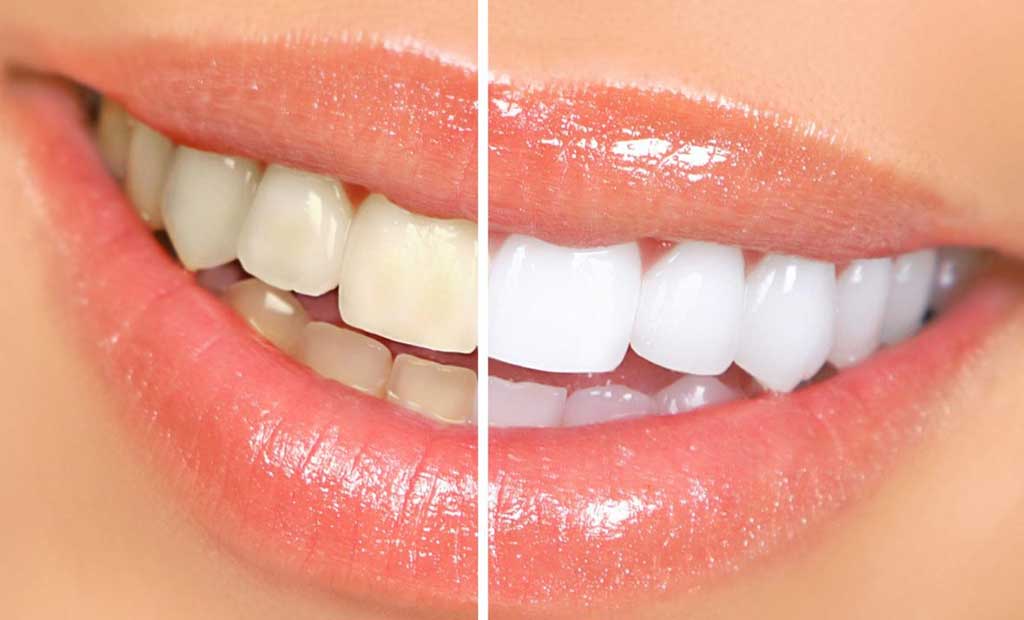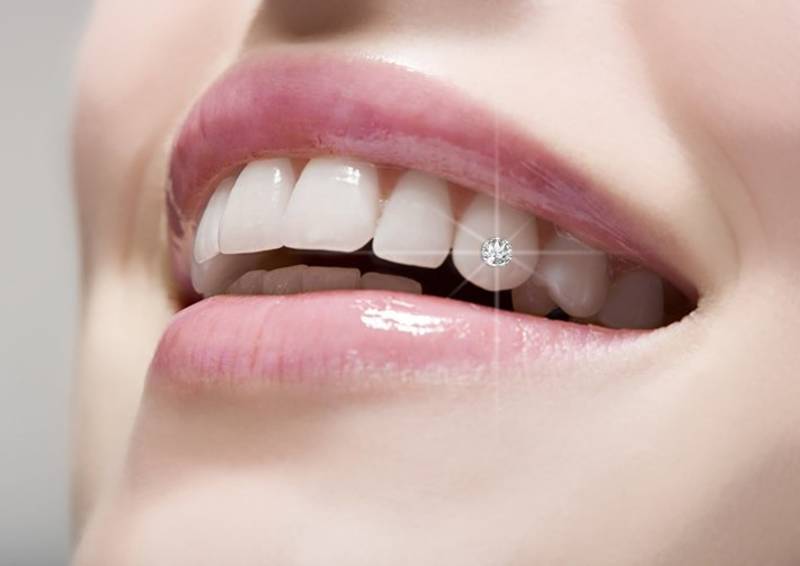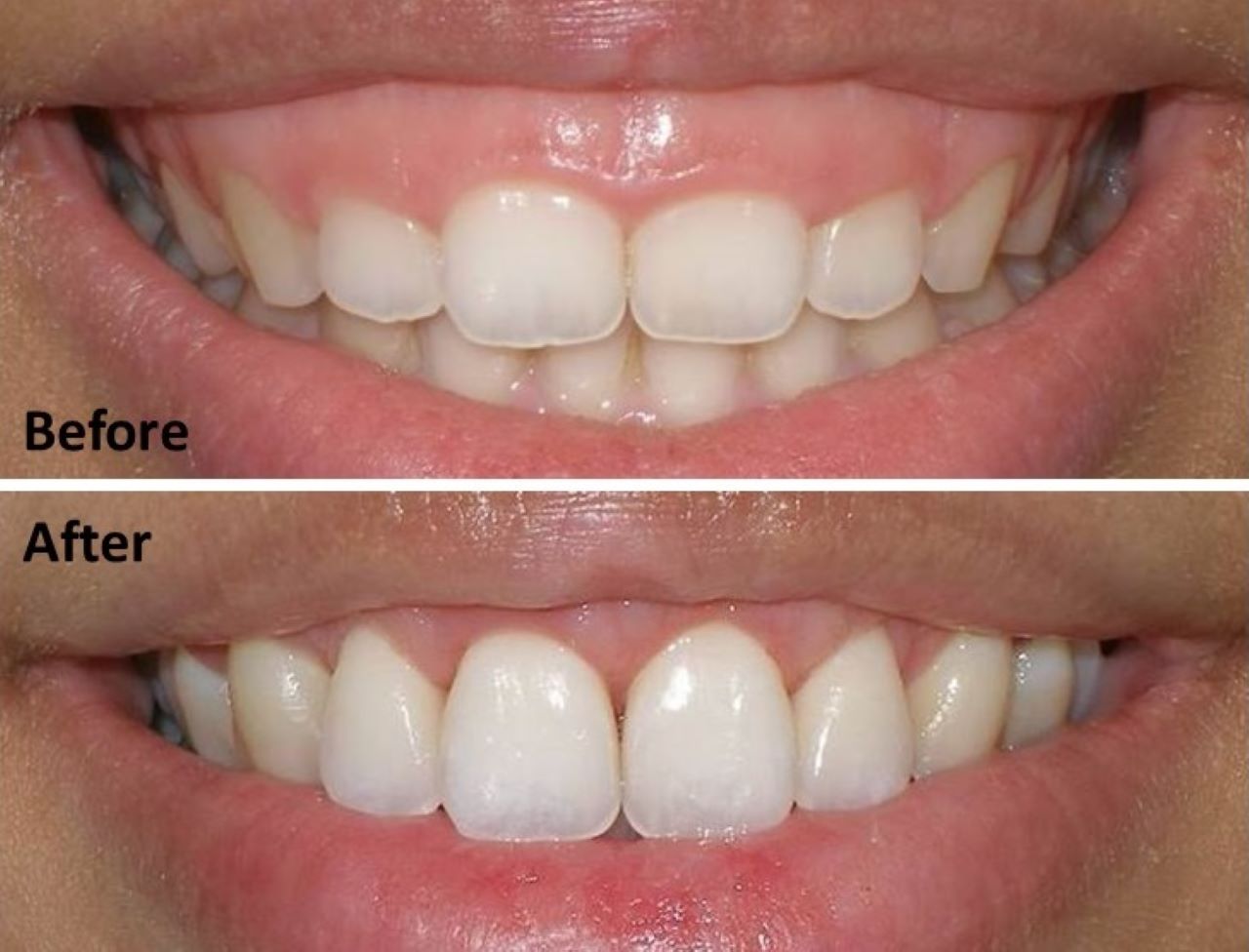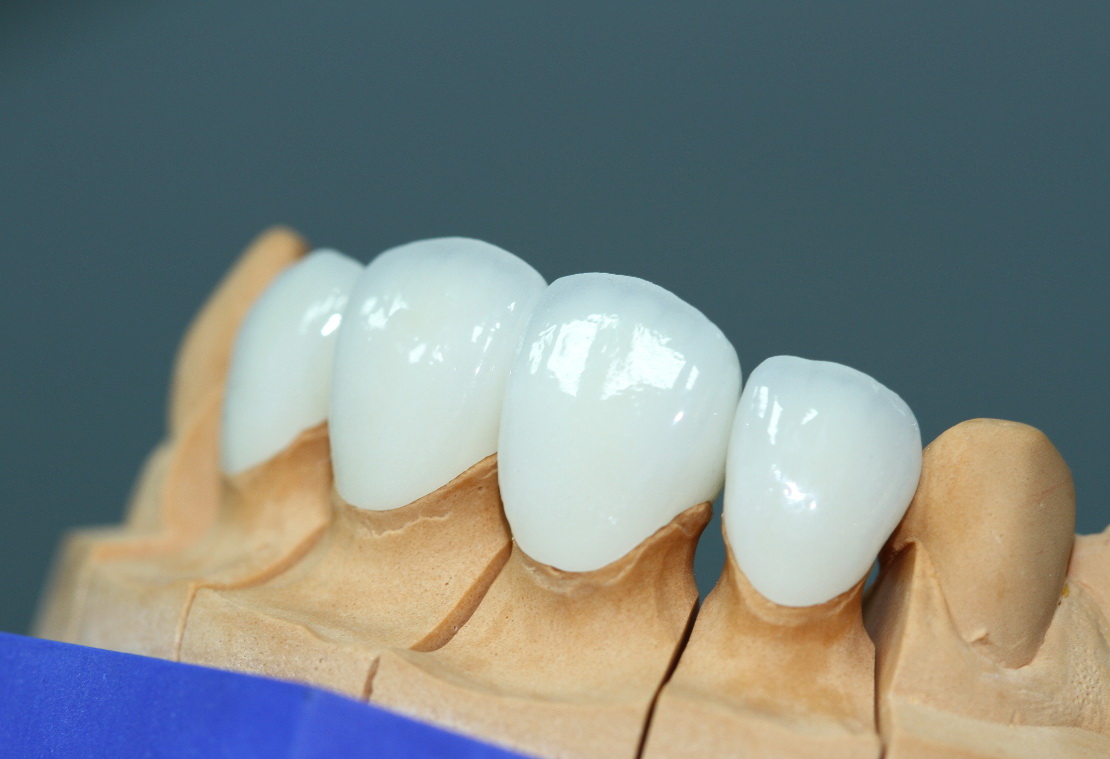Porcelain veneer bonding is an advanced cosmetic dental technique that corrects common dental imperfections such as tetracycline stains, minor gaps, or chipped teeth. Besides durability, many people also care about the procedure, cost, and finding a reputable clinic for veneers. Let’s explore the details with Amanda Dental Clinic in this article!
What is porcelain veneer bonding?
Porcelain veneers (also known as porcelain laminates) are thin shells, 0.3–0.5mm thick, with a color similar to natural teeth. Veneers are bonded to the front surface of the teeth, covering the entire visible area to enhance the shape and create an aesthetic appearance. Veneers are typically made from porcelain, composite, or synthetic resin and are permanently affixed to the teeth.
This method can be used to improve various cosmetic dental issues. Suitable candidates for porcelain veneers include:
- Individuals with worn incisal edges.
- Teeth that are chipped or cracked due to trauma.
- Teeth with gaps or spacing between them.
- Mildly misaligned, unevenly developed, or abnormally shaped teeth.
- Teeth that are stained or discolored from smoking, antibiotics, or ineffective whitening treatments.
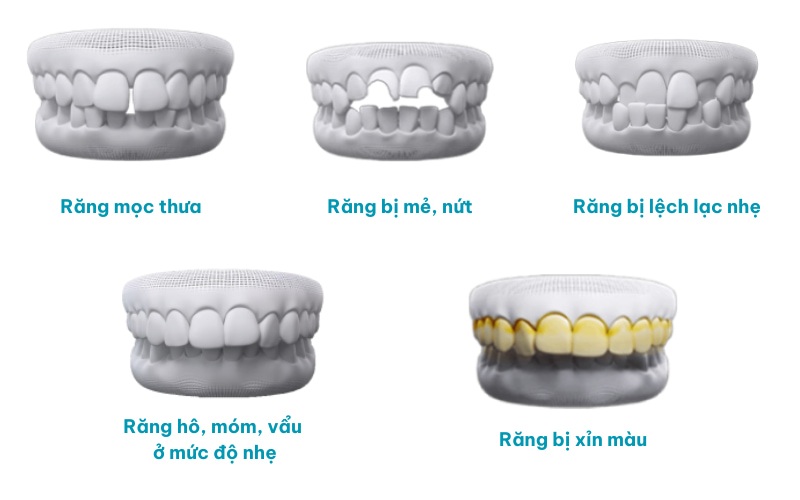
However, porcelain veneers are not suitable for the following cases:
- Patients with periodontal disease.
- Severely misaligned teeth or serious bite problems.
- Large cavities or teeth with significant enamel erosion.
During the veneer procedure, only a very thin layer of enamel is trimmed from the tooth surface, minimizing the impact on dentin and surrounding sensitive tissues. Local anesthesia is used to reduce discomfort during the process.
Advantages of Porcelain Veneers
Porcelain veneers are a popular cosmetic dentistry solution thanks to the following outstanding benefits:
- High aesthetic appeal: Veneers have natural translucency and color, mimicking real teeth and giving you a bright, radiant smile while maintaining a natural look. This method effectively corrects imperfections like gaps, chipped teeth, yellow stains, and uneven coloration.
- Minimal tooth trimming: Compared to dental crowns, veneers require only minimal enamel removal, preserving the natural tooth structure. Veneers are typically very thin—only about 0.2–0.5mm.
- Comfortable chewing: After applying veneers, you can chew just like with natural teeth without discomfort. Thanks to their ultra-thin profile (0.3–0.5mm), veneers bond closely with the tooth, ensuring excellent chewing function and no risk of detachment.
- High durability: Veneers are long-lasting, typically 10–15 years or more with proper care. Unlike natural enamel, porcelain veneers resist staining from coffee, tea, wine, and other foods, helping them retain their color over time.
- No pain, no sensitivity: The veneer procedure is gentle and non-invasive, causing no pain or discomfort. It’s a minimally invasive dental technique that doesn’t cause post-treatment sensitivity.
- Pulp protection and strong teeth: Because veneers only require minimal enamel removal, the tooth pulp remains protected. This avoids the risks of nerve exposure as with crowns and helps keep teeth strong and vital long-term.

Disadvantages of Porcelain Veneers
While porcelain veneers offer many exceptional advantages, they also come with a few limitations:
- High cost: Compared to other cosmetic procedures like crowns, veneers are typically more expensive.
- Not suitable for all cases: Veneers are not recommended for severely damaged teeth, root canal–treated teeth, or patients with bruxism (teeth grinding). People with severe cavities, loose teeth, protruding or receding jaws, or gum disease are also not ideal candidates.
- Requires high technical precision: Veneers demand experienced and meticulous dentists to achieve optimal aesthetic results.
- Durability depends on care: Though durable, the lifespan of veneers relies heavily on proper oral hygiene. Without good care, veneers may loosen, chip, or discolor over time.
- Irreversible enamel removal: Since a layer of enamel is trimmed, the natural tooth cannot be fully restored to its original state.
- Possible sensitivity: Some patients may experience temporary sensitivity to hot or cold foods after getting veneers.
- Limited color masking ability: For severely stained teeth, veneers may not fully conceal discoloration.
Although rare, veneers can sometimes detach. To reduce this risk, avoid habits like nail biting, chewing on pens or ice, and applying excessive pressure to teeth.
Before deciding on veneers, consult a dental professional to receive personalized advice and determine if this is the most appropriate solution for your dental condition.
Comparison Between Veneers and Dental Crowns
Porcelain veneers and dental crowns are both popular cosmetic procedures that improve your smile. However, they differ in the following key aspects:
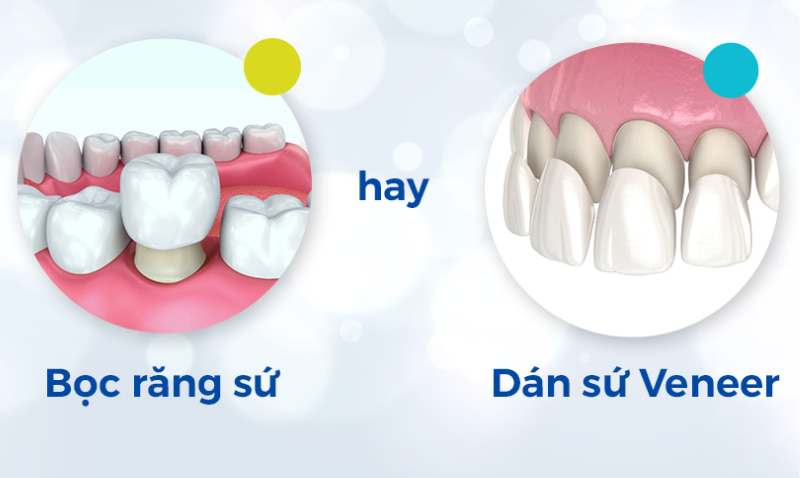
Suitable Cases
- Porcelain veneers: Ideal for teeth that are discolored, yellowed, slightly worn, or chipped (less than one-third of the tooth).
- Dental crowns: Recommended for severely damaged teeth, such as those with poor coloration, misalignment, large fractures, extensive cavities, or missing structure, or when bite correction is needed.
Procedure
- Porcelain veneers: The dentist trims only a thin outer layer (about 0.3–0.5mm) and bonds the veneer to the front of the tooth, preserving most of the enamel and surrounding structures.
- Dental crowns: The dentist trims 1–2mm of tooth structure and places a full crown over it. This can affect the tooth pulp and may require root canal treatment, making it suitable only for severely compromised teeth.
Durability
With proper care, veneers can last 10–15 years, while crowns may last up to 20 years. To ensure longevity, maintain excellent oral hygiene, avoid smoking, brush regularly, and limit hard foods.
Standard Porcelain Veneer Procedure
The porcelain veneer process typically involves the following steps:
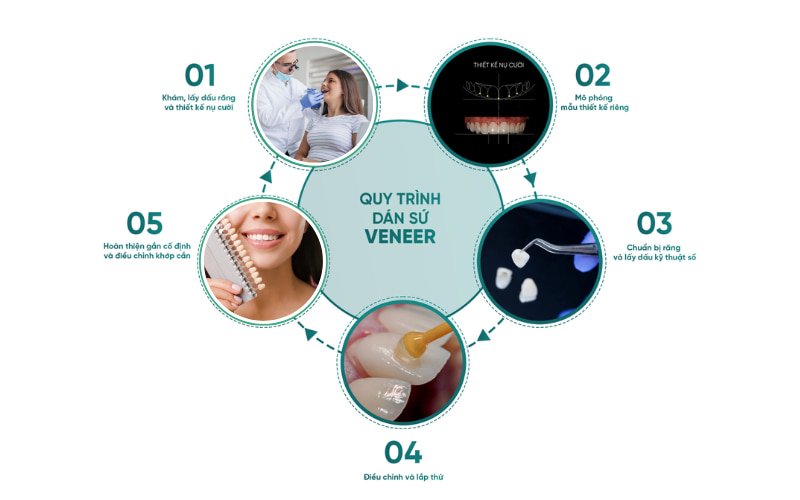
Oral examination: The dentist will thoroughly assess whether your teeth are suitable for veneers. This includes a full oral evaluation and X-rays to detect underlying issues, determine damage causes, and identify how many teeth need veneers.
Minimal enamel removal: Once oral issues are addressed, the dentist gently trims the enamel surface to create space for veneers.
Taking impressions and selecting shade: The dentist uses dental putty to take impressions, then selects the veneer color that best matches your natural teeth.
Mock-up and veneer fabrication: The impressions are sent to the lab to fabricate your custom veneers. This process may take a few days. In the meantime, temporary veneers can be provided to help maintain chewing function.
Bonding the veneers: The dentist tests the veneer fit and shade before making final adjustments. Once satisfied, your teeth are cleaned, and the veneers are bonded securely.
After the procedure, your dentist will guide you on proper oral hygiene and dietary habits to ensure long-lasting results.
How Much Do Porcelain Veneers Cost?
The cost of porcelain veneers may vary depending on several factors, including:
- Type of veneer material: Different materials have different prices. For example, Emax veneers are usually more expensive than composite veneers.
- Number of teeth being treated: The more teeth you need veneers for, the higher the overall cost.
- Oral condition: If your teeth have issues such as decay or gum disease, additional treatment may be required before placing veneers, increasing the total cost.
- Location and reputation of the dental clinic: Clinics in major cities or with a strong reputation tend to charge more.
Why Choose Amanda Dental Clinic for Veneers?
The success of porcelain veneers greatly depends on the dentist’s skills and the quality of veneer materials. Therefore, choosing a reputable dental clinic is crucial to achieving the desired aesthetic results. At Amanda Dental Clinic, you will experience a comfortable, safe veneer procedure with the highest satisfaction.
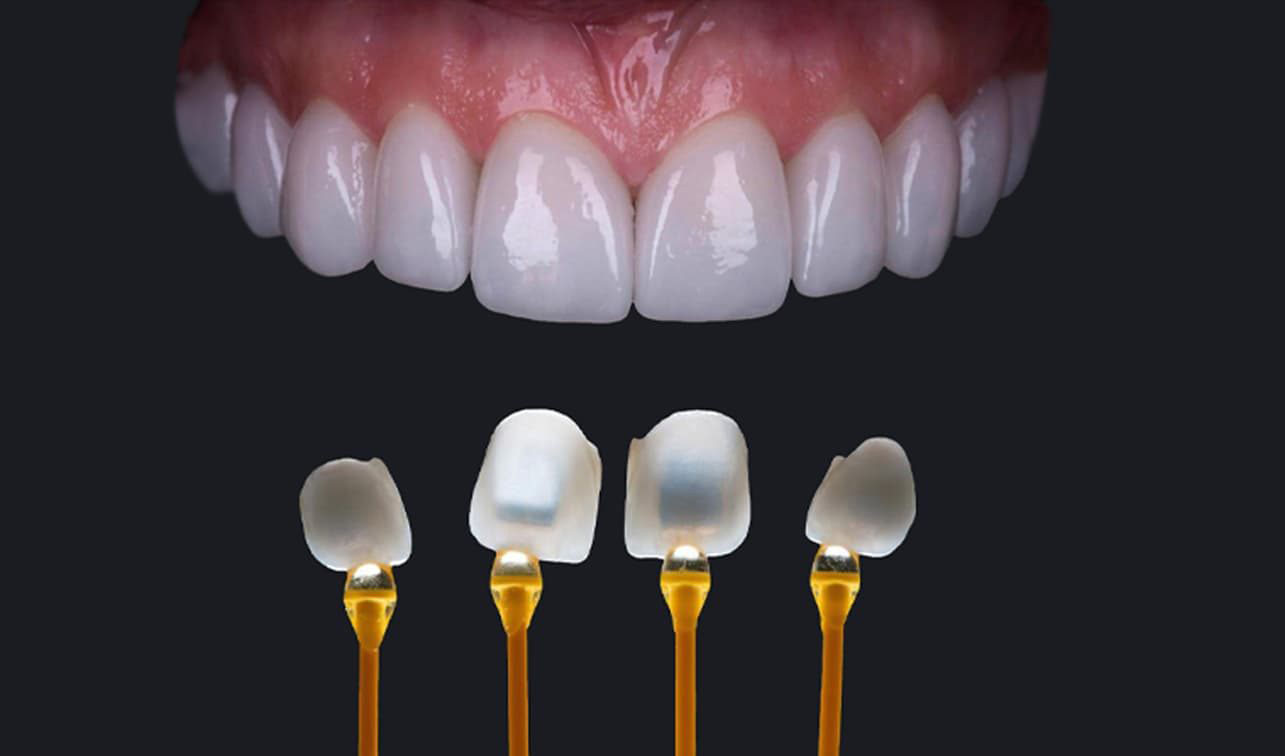
Highly skilled dental team: Amanda Dental Clinic gathers experienced, well-trained dental professionals in cosmetic dentistry. Our doctors regularly update their knowledge and techniques to provide the best outcomes for patients.
Modern facilities and advanced equipment: We invest in state-of-the-art infrastructure and tools, such as 3D dental scanners for painless impressions, ensuring precise and efficient veneer procedures.
Premium veneer materials: We only use high-quality porcelain veneers with clear origin, ensuring durability, aesthetics, and oral safety.
Dedicated customer care service: From consultation and examination to aftercare, Amanda Dental Clinic is committed to excellent service and patient experience.
Fair pricing for outstanding quality: We offer porcelain veneer services at reasonable rates that match the superior quality. You can confidently enhance your smile with long-lasting results.
Post-Veneer Care Tips
Taking care of your oral hygiene after getting porcelain veneers is crucial to maintaining their beauty and longevity. Here are some detailed guidelines:
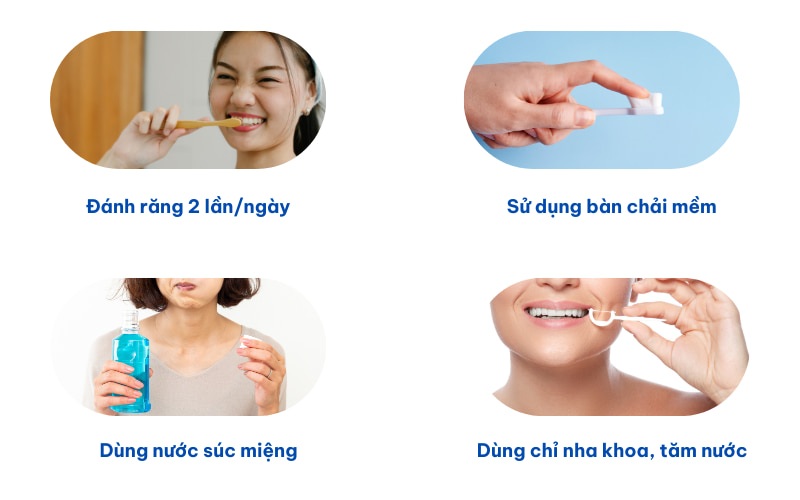
To preserve your porcelain veneers and overall oral health, build a healthy diet and lifestyle. Avoid smoking, limit dark-colored drinks and sugary foods. Tough or hard foods should also be minimized. Never use your teeth to open bottles, tear packaging, or bite your nails. Distribute bite force evenly across both sides of your jaw.
Regular oral hygiene is the key to maintaining your mouth after getting veneers. Use a soft-bristled toothbrush to brush at least twice daily. Mouthwash helps eliminate plaque in areas your brush may miss. Don’t forget to use dental floss or a water flosser to clean between teeth.
Visit your dentist every 6 months for a check-up to examine your oral condition and the bonded veneer surface. The dentist will assess your teeth, bite alignment, and adhesive quality. If you notice any signs like pain, swelling, or loose veneers, contact your dentist immediately for prompt advice and treatment.
With outstanding advantages such as natural color, high durability, and minimal invasiveness, porcelain veneers have become a top choice for those seeking a bright, confident smile. However, to ensure the effectiveness and longevity of your veneers, choosing a reputable dental clinic with experienced professionals is essential.




